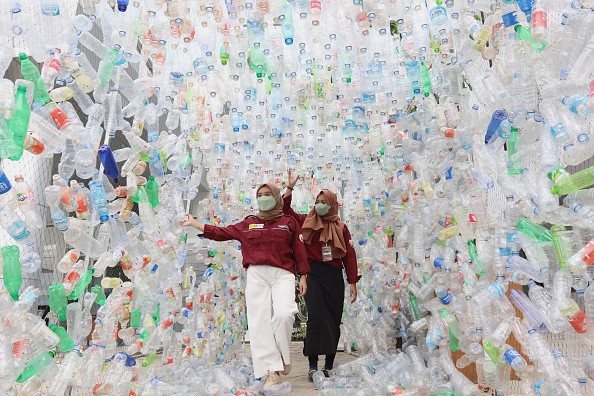Polymers have a lengthy history in the chemical industry. This entails combining tiny chemical building blocks to form lengthy chains of compounds that link together.
Polymers are the building blocks of all common plastics, such as PET and polyurethane.
While the production of polymers is extensively understood and explored, scientists have turned a blind eye to how polymer chains are broken down (a process known as depolymerization) to recover their building elements monomers.
One explanation for this is that polymer degradation is a complicated process.
The ability of a polymer to be broken down into its basic elements is dependent on which of the several polymer production procedures was employed.
The goal is to break down polymers

Professor of Polymeric Materials at ETH Zurich, Athina Anastasaki, seeks to change it.
Anastasaki has set herself the objective of creating polymers that can be readily broken down into their constituent parts and recycled, as per Sciencedaily.
The materials scientist has made an essential first step in this direction: a study conducted by her group was just published in the Journal of the American Chemical Society.
Anastasaki and her colleagues demonstrated in it that they can break down some polymers into their fundamental building components--monomers--and recycle them for use in other materials.
Polymethacrylates were synthesized utilizing a specialized polymerization approach known as reversible addition-fragmentation chain-transfer polymerization, abbreviated as RAFT.
This relatively new approach, which is gaining traction in the industry, yields polymer chains of consistent length.
Also Read: Microplastics: The 'Missing Plastics' of the Ocean Uncovered by Scientists
The same or a different product will be produced
The building blocks retrieved in this manner, according to Anastasaki, can be utilized to generate the same polymer or an entirely new product, an insoluble hydrogel that can likewise be broken down into its monomers.
The newly developed items are of comparable quality to the originals.
This is in contrast to earlier recycled polymer-based goods.
However, there is a catch: RAFT polymerization products are more costly than traditional polymers, according to Anastasaki.
To solve this shortcoming, she and her colleagues are currently working on developing the process for large-scale applications, which will make it more competitive and the final goods more affordable.
The researchers also hope to enhance the quantity recovered and recover all of the polymer's basic ingredients.
Turning plastics into valuable chemicals
According to research senior author Susannah Scott, a chemical engineer at the University of California, Santa Barbara, the molecule polyethylene, which is often used in packages and shopping bags, is the greatest element of plastic garbage and may take centuries to disintegrate, as per Inside Science.
One issue with plastic is that it is less expensive and easy to create and dispose of than it is to recycle.
Products made from recycled plastics frequently have inferior properties to those made from virgin plastics, and breaking down plastics to their actual building blocks is very often complicated and takes a lot of effort or chemicals, so the resulting products frequently do not recoup the operational costs.
Scott and her colleagues have now developed a simple, low-energy technique for transforming polymeric materials into alkyl aromatic compounds, which have been the foundation of many cleaning agents, lubricating oils, paints, solvents, pharmaceutical drugs, and other consumer and industrial products and officially support a $9 billion market annually.
They developed and tested their process on genuine plastic garbage, which included a plastic bag and a water bottle cap.
This novel method is based on two distinct chemical processes that work in tandem.
The first utilizes hydrogen to split polyethylene into smaller pieces, so disrupting the strong molecular bonds that keep the plastic together, while the second synthesizes alkyl aromatic chemicals.
The latter process produces hydrogen, which may be used to power the former reaction.
Only a limited amount of byproducts are produced, such as light gases like methane, which may be burnt to assist power the process.
Related article: Recycled Plastics Harm Environment by Leaking Hazardous Chemicals, According to Experts
© 2024 NatureWorldNews.com All rights reserved. Do not reproduce without permission.

![Climate Change is Reducing Dust Levels Worldwide as Arctic Temperature Warms [Study]](https://1471793142.rsc.cdn77.org/data/thumbs/full/70320/280/157/50/40/climate-change-is-reducing-dust-levels-worldwide-as-arctic-temperature-warms-study.jpg)
![Tsunami Hazard Zones: New US Map Shows Places at Risk of Flooding and Tsunamis Amid Rising Sea Levels [NOAA]](https://1471793142.rsc.cdn77.org/data/thumbs/full/70325/280/157/50/40/tsunami-hazard-zones-new-us-map-shows-places-at-risk-of-flooding-and-tsunamis-amid-rising-sea-levels-noaa.jpg)


